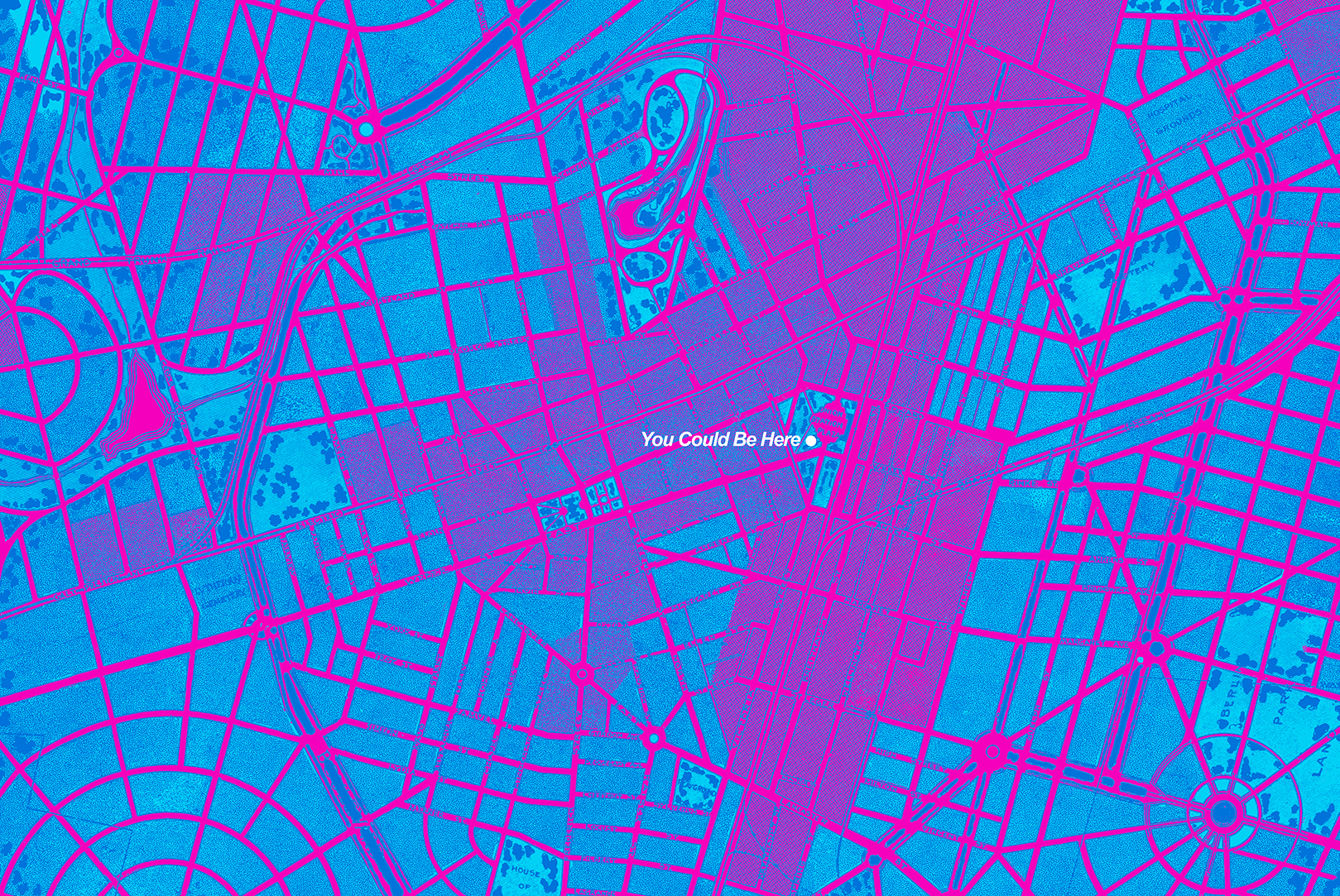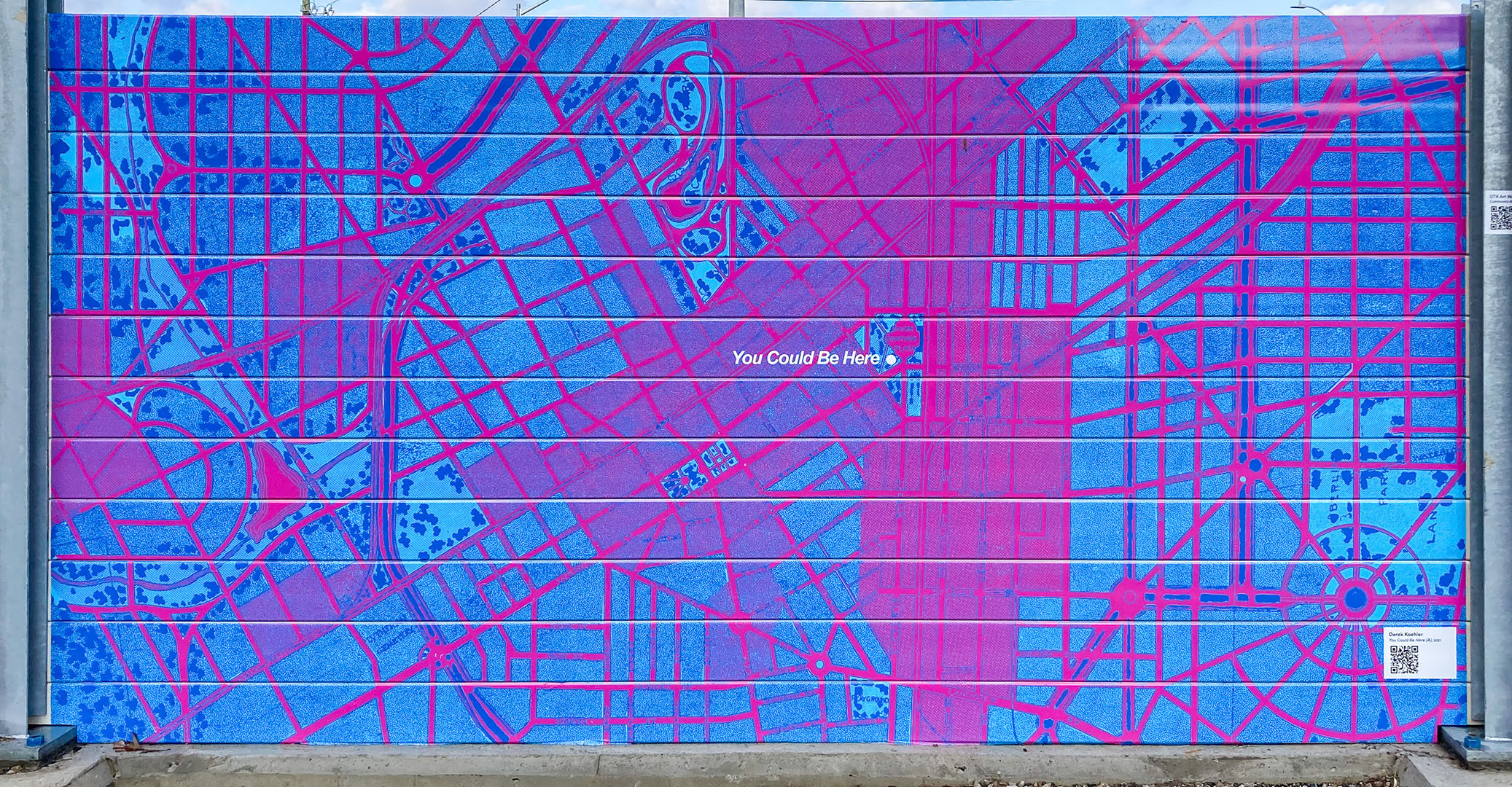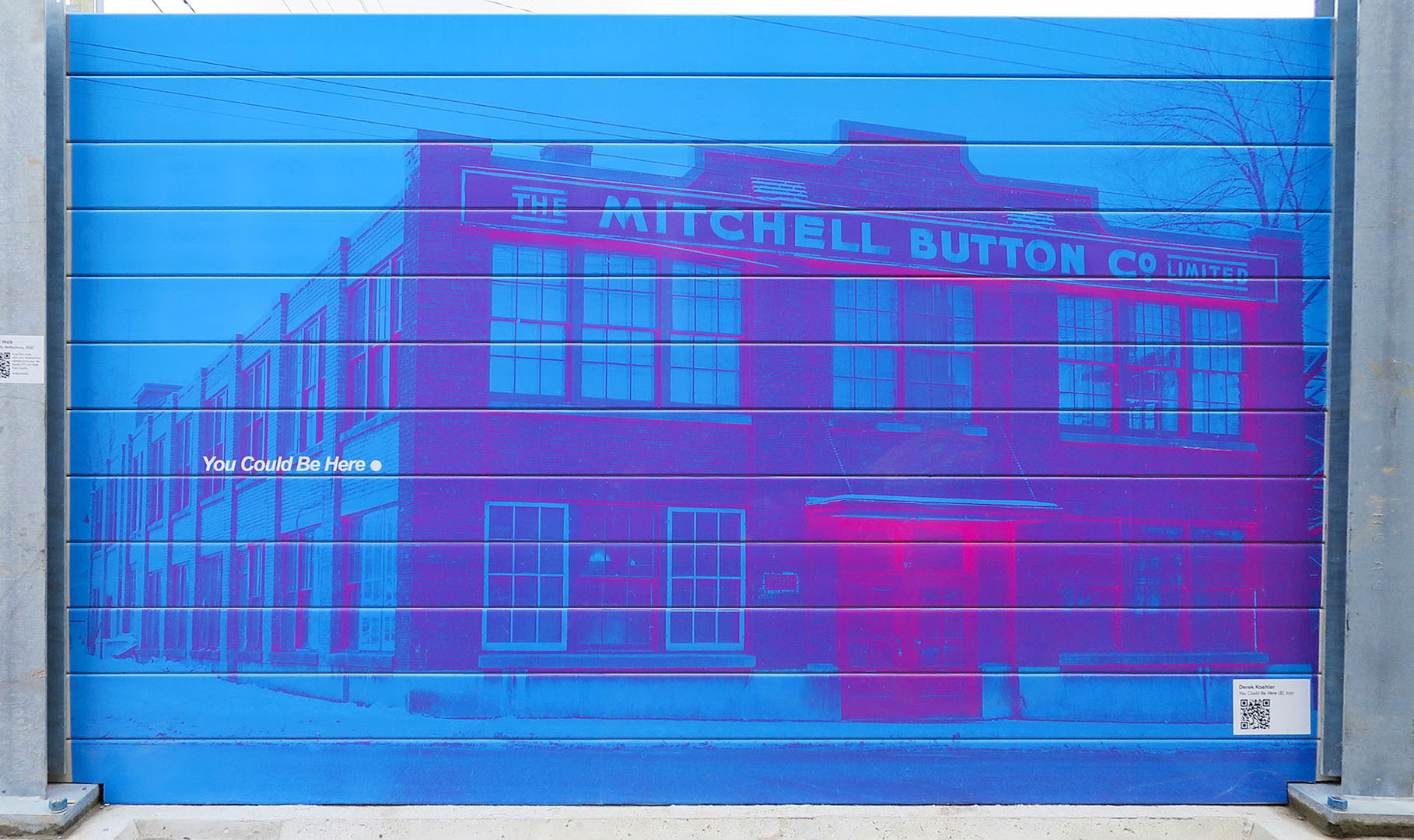A pair of digital works that are included as part of the DTK Art Walk project (Heit & Hope Lanes Community Reflection) in Kitchener, Ontario, Canada.
This work was created using two site-specific historical images. The first is the 1912 Leavitt Plan for Kitchener (then Berlin) and Waterloo. Although the plan was never implemented, it illustrates an aspirational approach to city planning. Under the Leavitt plan, the area surrounding Heit and Hope Lanes would have been a public park, called Union Station Plaza, fronting a relocated rail station. Attention is directed to this possibility by a locator label (“You Could Be Here”).
The second image is derived from a 1958 photo of the Mitchell Button Factory at 97 Victoria St. N., which was built around 1927 and – after Mitchell Button became Mitchell Plastics and outgrew this location – now houses St. John’s Kitchen. If the Leavitt Plan had been implemented, Mitchell Button would not have been able to build its factory in this location.
The broad theme of this work is possibility: aspirations, alternate uses, counterfactuals, historical contingencies, adaptation and change, as they play out in a built environment that is shaped by, and in turn shapes, human activity.
This work is based on archival images from the University of Waterloo. Research assistance by librarians from Special Collections & Archives at the University of Waterloo and from the Grace Schmidt Room of Local History at Kitchener Public Library is gratefully acknowledged.
Archival Image Sources:
University of Waterloo Library. Special Collections & Archives. Schantz Russell Family Fonds.
University of Waterloo Library. Special Collections & Archives. Kitchener-Waterloo Record Photographic Negative Collection.
Installed dimensions: (A) 137-3/4 inches w x 71-1/2 inches h; (B) 113 inches w x 71-1/2 inches h



